General Discussion
Related: Editorials & Other Articles, Issue Forums, Alliance Forums, Region ForumsThey Had Feathers: Is the World Ready to See Dinosaurs as They Really Were?
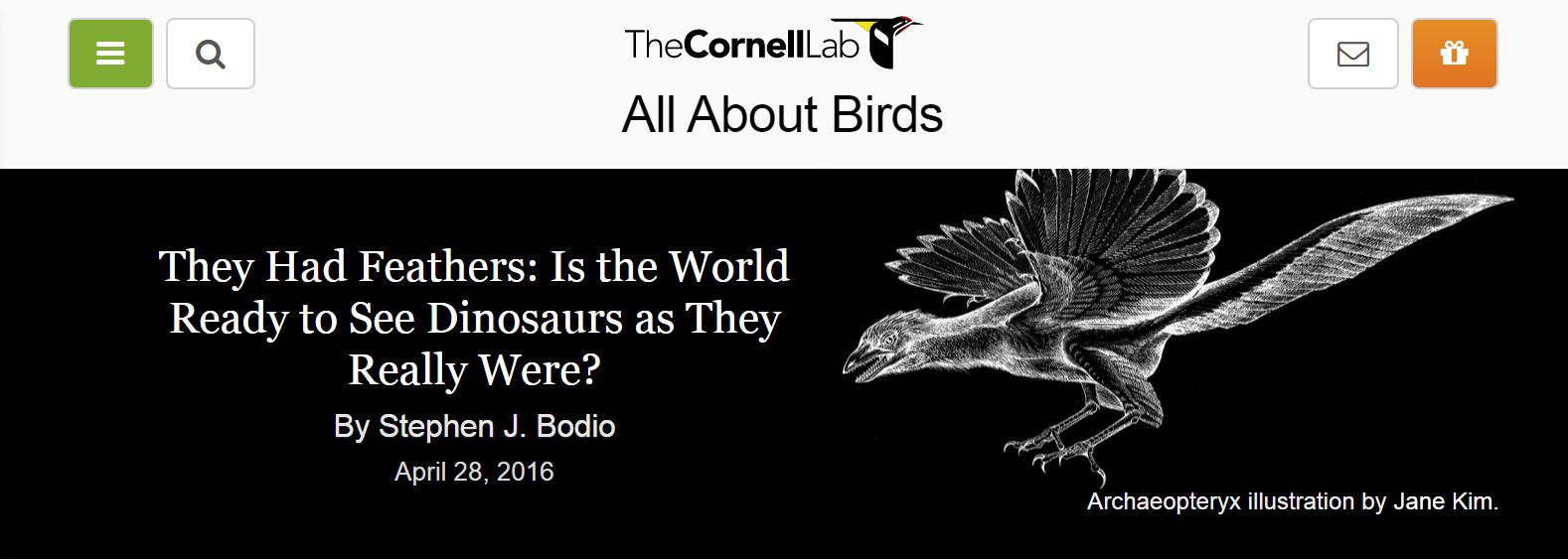
https://www.allaboutbirds.org/they-had-feathers-is-the-world-ready-to-see-dinosaurs-as-they-really-were-2/?utm_source=Cornell%20Lab%20eNews&utm_campaign=9338018069-Cornell_Lab_eNews_2016_05_10&utm_medium=email&utm_term=0_47588b5758-9338018069-302623569
In last summer’s Jurassic World movie, a pack of scaly velociraptors chased a man on a motorcycle.
There are two possible reactions to this scene. One, if you are among the blockbuster’s wider audience: Wow! Those dinosaurs look like they’re alive! Or two, if you are a paleontologist or a dinosaur-obsessed kid: Wait a minute. Those are too big to be velociraptors. And why are they covered with scales?
Dinosaurs have been getting slowly more birdlike for decades—perhaps not in mainstream depictions, but at least in the minds of paleontologists. This is thanks to three pioneers: the late John Ostrom of Yale, who discovered a fossil called Deinonychus in 1964 and hypothesized that it was warm blooded; John McLaughlin, a brilliant illustrator, science fiction writer, and scientist, who suggested that many dinosaurs were feathered and warm blooded in a 1979 book called Archosauria; and perhaps most memorable, Robert Bakker, a bearded, ponytailed paleontologist, who was once called a “fossil-junkie genius, the Galileo of paleontology.” He liked to describe Tyrannosaurus rex as “the 20,000 pound roadrunner from Hell.”
Now, thanks to troves of new fossil discoveries, those paleontologists and dinosaur-obsessed kids don’t just think but know: “Dinosaurs had feathers!” And not just hairy kiwi-style feathers, but complex, asymmetrical vaned ones, like the flight feathers of modern birds. This new thinking has been spurred on by discoveries of exquisitely detailed fossils in deposits of fine-textured lithographic limestone.
FULL story at link.

LiberalEsto
(22,845 posts)silvershadow
(10,336 posts)hobbit709
(41,694 posts)madinmaryland
(64,933 posts)It's dinosaur fer chrissakes!!
LiberalEsto
(22,845 posts)Breeding dinosaurs with corn flakes?
Why not panko?
malaise
(268,997 posts)Rec
Warpy
(111,257 posts)I honestly think most of them had some form of plumage, even if it was a Mohawk of them down the back of a Stegosaurus or a ruff around the neck or showy display at the end of the tail. The last thing I think dinosaurs were is olive drab and scaly. It just doesn't compute. After all, even contemporary lizards have a huge range of color and adornment.
Mother Nature tends to like bling.
Scootaloo
(25,699 posts)Sort of. All birds are equally close to Tyrannosaurs, as both birds and tyrannosaurs are both part of the Coelurosauria clade. They're not particularly close, as there are a few more clades to go to get to birds (maniraptora, avialae, euornithes, and finally aves). And a chicken in particular is no closer to a T-rex than a hummingbird is to an ornithomimus. In fact, chickenlike birds (galliformes) may have existed at the same time as tyrannosaurs were stomping around.
Also, there is evidence that ornithosuchans had feathers as well, or at least featherlike structures. It may have been a "crown archosaur" thing rather than a "therapod" or even "dinosaur" thing. Pterosaurs had some sort of "fuzzy" covering, but there's no evidence that crocodiles ever did.
As for their coloration... well... Birds are the closest relatives to dinosaurs we know of, and they tend to be pretty colorful. Even the "drab" ones might be more colorful than we know, because birds are tetrachromats - they see four primary colors, as opposed to humans' three (and most mammal's two, or non-color vision.) That is, boring-looking birds might have colors and patterns going on that we just can't perceive.
We don't know how most dinosaurs were colored (we've actually used molecular structrues in finer fossiels to deduce the coloring and patterns of some dinosaur feathers) but we can almost certainly assume they were also tetrachromatic seers; birds and crocodiles both are, and those are the guys at the front and back of archosaur evolution. Almost all reptiles are tetrachromats, barring some nocturnal lizards and snakes. Turtles and tuataras are even pentachromats. So basically, all reptiles, aside from individual species, have color vision at least as strong as ours, and are likely to have evolved colors and patterns in kind with this ability.
We can guess that dinosaurs would have followed the environmental color scheme we see in all animals though - the warmer the environment, the brighter and more varied the colors.
Archae
(46,327 posts)
NV Whino
(20,886 posts)And to think I've been blaming the raccoons for all the destruction.

Ron Obvious
(6,261 posts)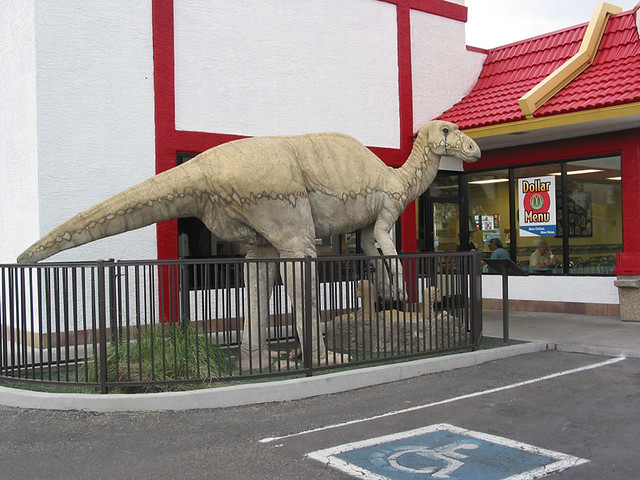 ?zz=1
?zz=1
C'mon, it's a plucked chicken.
lagomorph777
(30,613 posts)I feel a little embarrassed.
cigsandcoffee
(2,300 posts)Octafish
(55,745 posts)Don't park your clean car anywhere near them either -- especially a convertible.
trudyco
(1,258 posts)XemaSab
(60,212 posts)suffragette
(12,232 posts)uppityperson
(115,677 posts)It could be different, but that's how the black with bright blue bird name sounds to me.
suffragette
(12,232 posts)KelleyKramer
(8,961 posts)Very interesting, opens up all kind of doors (or windows?)
muriel_volestrangler
(101,316 posts)Now, this is the important bit, because Ornithischia covers a huge amount of the dinosaurs - Stegosaurus, Ankylosaurus, Iguanodon, Triceratops and so on. The earliest split in the dinosaur family tree was between Ornithischia and Saurischia. So something from early Ornithischia is really important.
Bu he doesn't even name it! We have Kulindadromeus, which I started a thread on here a couple of years ago, from about 170 to 150 million years ago, Tianyulong from about the same period, and later Psittacosaurus from the Cretaceous. But now the author casually says there's one that's over 200 million years old, but doesn't say what it is! Just "a very early small dinosaur".
If you want to say 'dinosaurs in general had feathers', then finding yet more feathered theropods is not interesting. It's the other branches that are still uncertain.
Recursion
(56,582 posts)One thing I wish I'd really learned in high school biology was that more years separate S stenops from T rex than separate T rex from H sapiens. Kind of changes your whole perspective...
ChisolmTrailDem
(9,463 posts)...on the Land of the Lost TV show way back when.
Warren DeMontague
(80,708 posts)They probably tasted like Chicken.
roamer65
(36,745 posts)Javaman
(62,530 posts)I always thought that the way dinosaurs were traditionally presented, looked like plucked chickens.
sofa king
(10,857 posts)Wings and a tail like the suni above might not be able to fly, but could they generate enough lift to hover over the forest floor, so that they could silently attack from 30 or more feet away? Some sea-birds do it, I see from time to time.
https://www.jstor.org/stable/55562?seq=1#page_scan_tab_contents
https://en.wikipedia.org/wiki/Ground_effect_(aerodynamics)
I might just mention this to the folks in the lab....
FLPanhandle
(7,107 posts)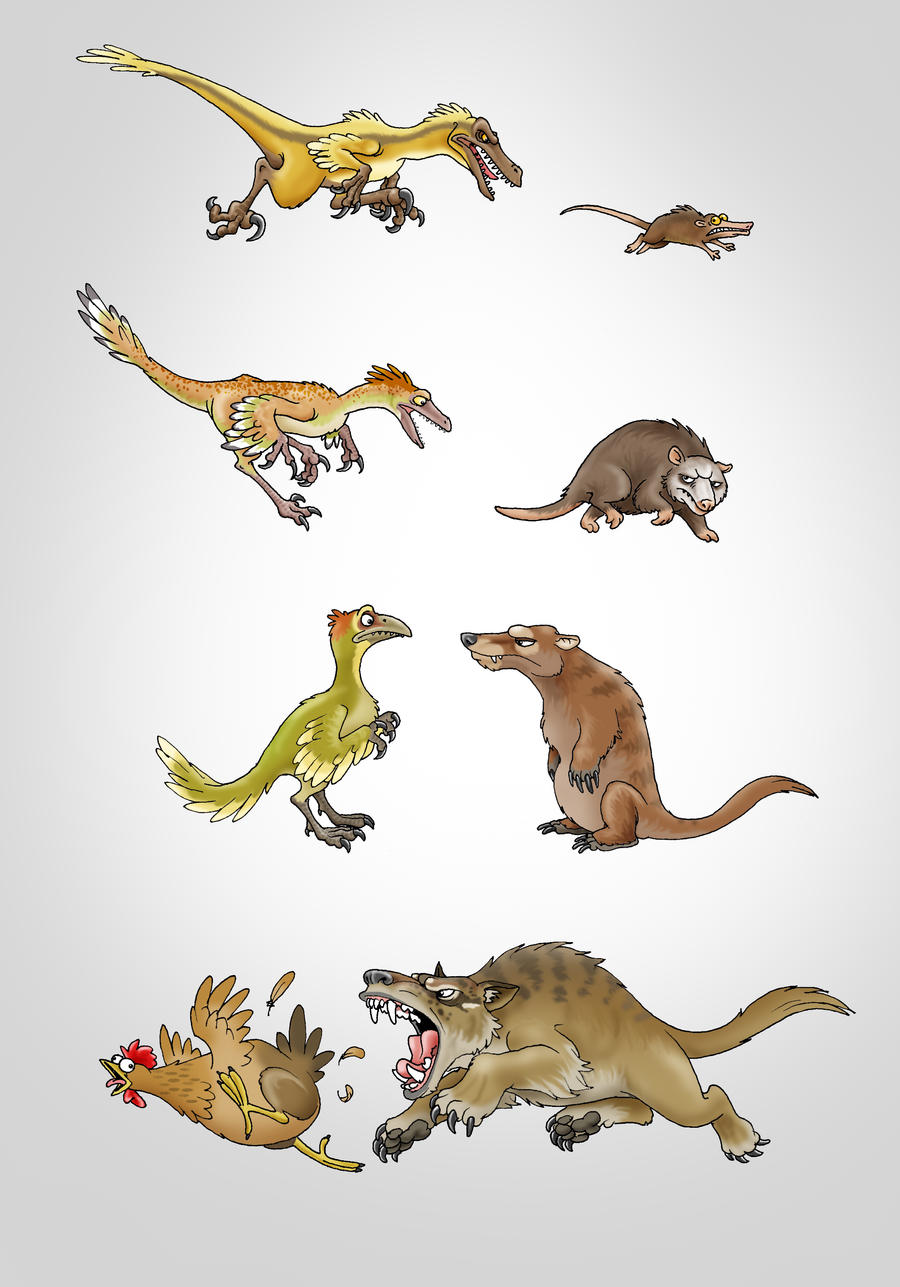
cagefreesoylentgreen
(838 posts)There's a nicer ring to "The dinosaurs crapped all over my car again" versus "The birds crapped all over my car again."
But yeah, if you've ever spent some time living around a parrot, I doubt you'd question the dinosaur-bird link. ![]()
FLPanhandle
(7,107 posts)Scootaloo
(25,699 posts)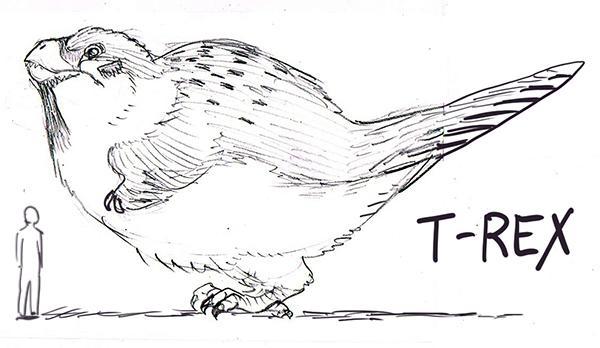
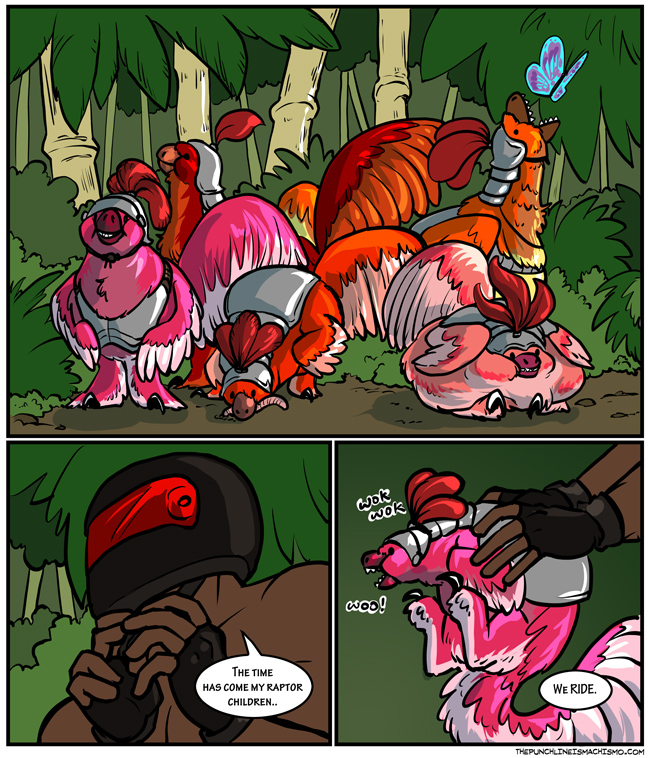
wok wok WOO!
Norrin Radd
(4,959 posts)thing I've seen in a long time.